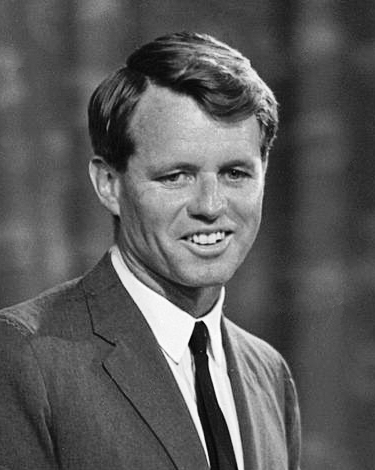BY JERRY TALLMER | At 3 a.m. on the 6th of June, 1968, then and now the anniversary of D-Day 1944, as I was collapsing atop our bed after nearly 24 hours of research into and then writing for the next day’s paper the life and times of Valerie Solanas, the Andy Warhol disciple who had a day earlier shot at and hit but did not manage to kill her idol, the telephone rang.
It was Sidney Zion, at that moment an unemployed newspaperman but busy journalist, my oldest friend in or out of those professions.
“Bobby Kennedy’s just been shot by some nut out in Los Angeles,” Sidney said. “Better get your ass out of bed and down to the paper.”
That is also more or less how I’d begun two pieces in the past about Robert F. Kennedy, not counting a very brief unsatisfying election-year ’68 interview in his Attorney General’s Office.
Now, this moment in that same 1968 — the anniversary then and now of D-Day 1944 — the night editor in charge of the whole shebang at the New York Post was an embittered, gray-haired, sarcastic onetime Stalinist whose name need not appear here, if indeed he is still alive. He gave me a terse nod of the head as I entered the huge cruddy old City Room, then nodded me toward chair and (yes!) typewriter, and said nothing. No, said one word: “Obit.”
The sleep-heavy rewrite men and women were now trickling in, one by one.
Soft-spoken Ralph B. got on the phone to hospitals in Los Angeles and power centers in Washington, D.C. So did I, some.
One suddenly became aware of the presence of Paul Sann, cowboy-booted, hardboiled Post executive editor, somewhere in that City Room. At 4 a.m., a copy person came on the run from Composing Room to City Room carrying, not what my grandmother would have called “a Message From Garcia,” but a note that we must lock up and start rolling in five minutes.
It was a pure or most impure flashback to the terrible moment five years earlier — November 22, 1963 — in Dallas, Texas.
Now I could hear Ralph B. murmuring something that sounded like a low, sad “He’s gone,” and then, out in Los Angeles, Robert F. Kennedy, younger brother of John F. Kennedy, really was gone.
The embittered night city editor shrugged, reached for the carbons of what I’d been writing, glanced over it, turned the stuff face down, and said: “Stop writing.”
Paul Sann put his own hand atop the pile of carbons.
“No,” he said. “Keep writing — we’ll print.” It was the only time in 30-something years I felt like hugging Paul Sann.
Extended flashback to 1963: Al Davis, No. 2 man to Sann, has arrived on the scene with a radio of his own. A little knot of Post people has clustered around him and his radio.
City Editor John Bott tells me to go out on the street and talk to somebody, anybody, then come back and write it.
As I head off to do this, I hear madman Al Davis — he who’d brought me to The Post the year before — bellow from across the room one large, loud, disoriented shout of “D-e-ad!” — like a man having a nervous breakdown.
Lo and behold, Mrs. Schiff has come down from her “Tower” to the City Room, where, having nothing more helpful to do, she starts “making books” — alternate sheets of copy paper and carbon paper, a task usually assigned to copy boys of either gender.
On the ground floor of 75 West Street, the aged building that houses the New York Post in those years, there is a tiny coffee and candy counter run by an elderly Jewish couple. Her name is Ada Greenfield. His I do not know.
“Ada,” I say on my way out, “have you heard? The president’s been shot.”
“Yes,” she says. “It’s like a great young tree that’s been cut down. Isn’t it terrible.”
Ada Greenfield has done my job for me.
The piece on Valerie Solanas never did run.


















